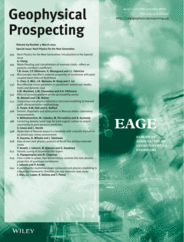-
oa From cradle to grave: how burial history controls the rock‐physics properties of quartzose sandstones
- Source: Geophysical Prospecting, Volume 69, Issue 3, Feb 2021, p. 629 - 649
-
- 29 Feb 2020
- 22 Sep 2020
- 10 Nov 2020
Abstract
Rock‐physics properties of sands and sandstones are strongly affected by geological processes of the past, including deposition, compaction and exhumation. By honouring these geological processes, the rock‐physics modelling will be more predictive in areas with limited well control. This study performs rock‐physics modelling constrained by a given geological history, starting from deposition to mechanical and chemical compaction. Different geological factors, including sorting, grain size and clay coating, will affect the quartz cementation and rock stiffening of quartzose reservoir sandstones. By combining compaction models with rock‐physics contact theory, we can model the rock‐physics properties of sands/sandstones as a function of geologic time. We have demonstrated the approach on well log data from three selected wells on the Norwegian Continental Shelf, where the burial histories of the target reservoir sandstones are significantly different. We conclude that rock‐physics modelling constrained by burial history can be used to predict elastic properties quite accurately in these wells. The integrated approach presented in this study allows for more realistic rock‐physics depth trends in areas with complex burial history that can be used in AVO studies or to estimate net erosion associated with tectonic uplift.




